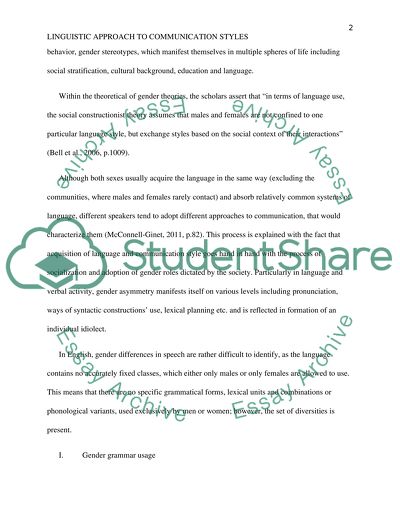Cite this document
(“Gender Speak: A linguistic Approach to Communication styles Research Paper”, n.d.)
Gender Speak: A linguistic Approach to Communication styles Research Paper. Retrieved from https://studentshare.org/gender-sexual-studies/1677923-gender-speak-a-linguistic-approach-to-communication-styles
Gender Speak: A linguistic Approach to Communication styles Research Paper. Retrieved from https://studentshare.org/gender-sexual-studies/1677923-gender-speak-a-linguistic-approach-to-communication-styles
(Gender Speak: A Linguistic Approach to Communication Styles Research Paper)
Gender Speak: A Linguistic Approach to Communication Styles Research Paper. https://studentshare.org/gender-sexual-studies/1677923-gender-speak-a-linguistic-approach-to-communication-styles.
Gender Speak: A Linguistic Approach to Communication Styles Research Paper. https://studentshare.org/gender-sexual-studies/1677923-gender-speak-a-linguistic-approach-to-communication-styles.
“Gender Speak: A Linguistic Approach to Communication Styles Research Paper”, n.d. https://studentshare.org/gender-sexual-studies/1677923-gender-speak-a-linguistic-approach-to-communication-styles.


